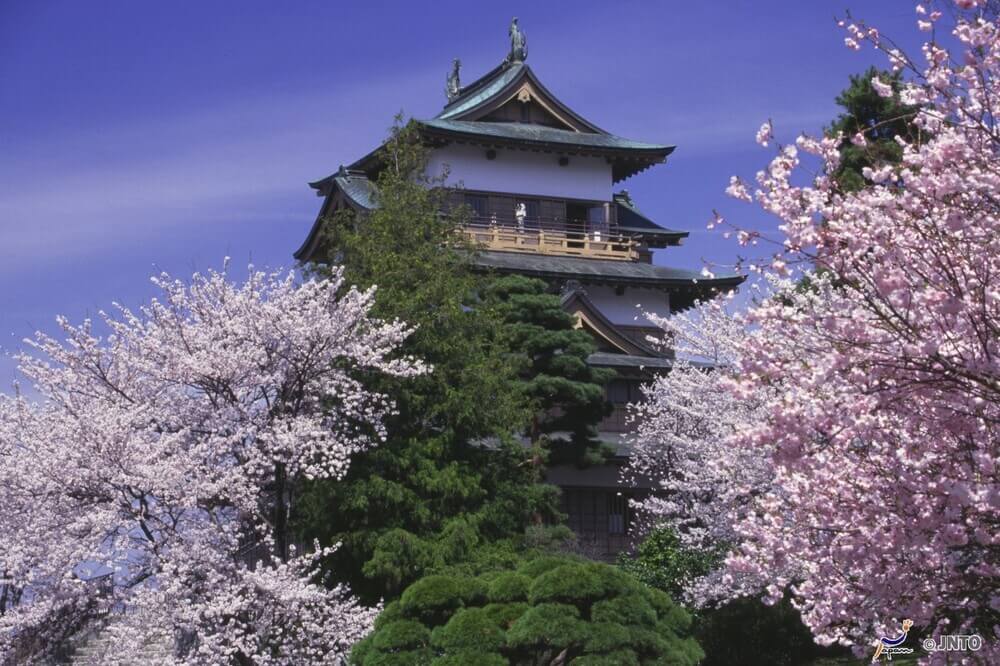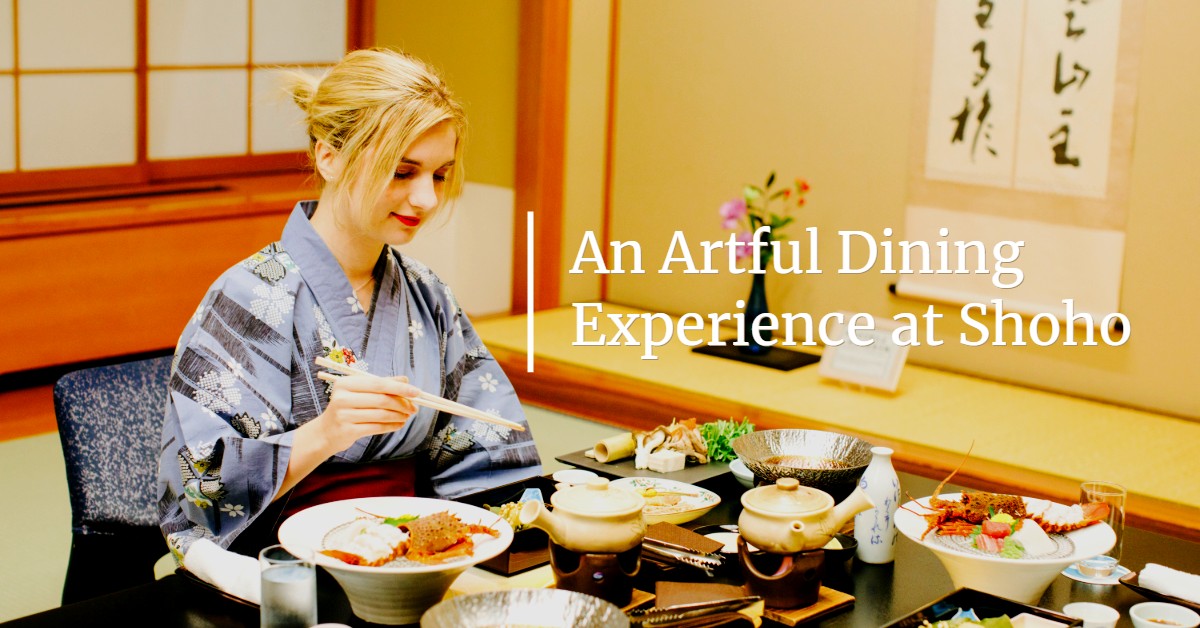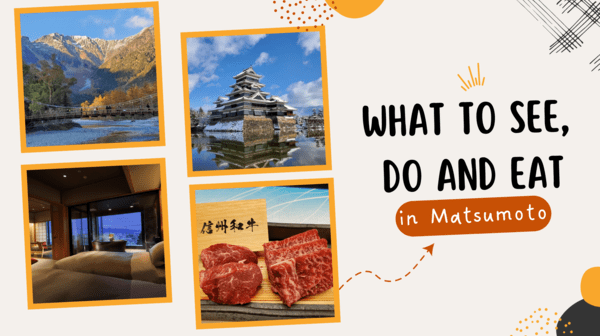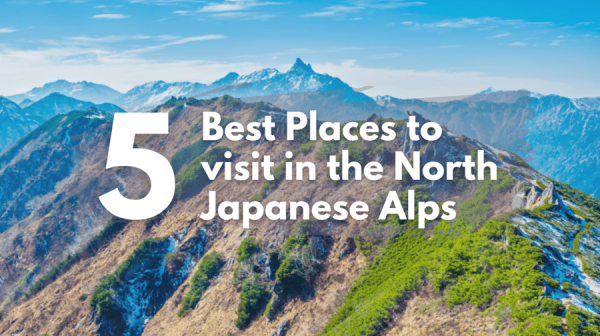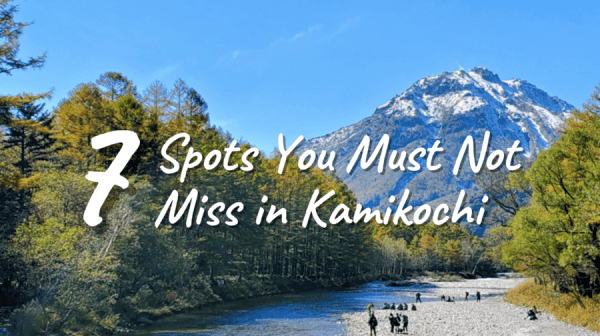Summary
In the middle of Nagano Prefecture lies the quiet and peaceful Suwa area. The place is famous for its beautiful lake of the same name that’s also featured in the popular animated film “Your Name” (2016).
During summertime, firework festivals light up the surface of Lake Suwa and during wintertime there is a chance that the lake completely freezes over. This phenomenon is called omiwatari.
But there are plenty of other things to see and discover besides the lake; ancient shrines, old sake breweries, interesting museums, delicious local specialties and much more. There’s so much to see and do that you honestly cannot fit everything in one day, but if you only have one day and the weather is on your side, here’s how we would spend it.
First, you’ll have to get to the Suwa area. Not too worry though, the area is easily accessible via public transport. There are two towns in Suwa called Kamisuwa and Shimosuwa and each has their own station. The closest one to the lake and most sightseeing spots in Kamisuwa Station, so make your way there by hopping on a train or bus.
Check all our bus routes to and around the Suwa area >
Once you’ve arrived at Kamisuwa Station, you will notice a small area with a lot of rocks to the left of the ticket gate. This is a foot bath that you can freely use from 9:00 until 21:00. It’s perfect for when you have some time left when waiting for the next train to arrive.
Go out the station entrance and turn right to find the tourist information center where you can pick up an area map and other useful information. Before heading for the famous lake, let’s go to a little less known place first: Takashima Castle.
Takashima Castle
One of the most famous castles in Japan is Matsumoto Castle as you can tell by the hundreds of thousands of tourists visiting it each year. On the other hand, Takashima Castle in Suwa is a lot less known, but that doesn’t make it any less beautiful or interesting. Although it is smaller in size, it is the highest elevated castle ever constructed in Japan.
Also known as the “Floating Castle of Suwa”, Takashima Castle was originally built on a peninsula that extended into Lake Suwa in 1592. While a lot has changed about the castle and its surroundings since then, the castle – and in particular its gardens – are definitely worth a visit.
Opening Hours: 9:00~16:30 (until 17:30 from April through September)
Closed from December 26~31 and the second Thursday of November
Entrance Fee: Adult 300 JPY, Child 150 JPY
Lake Suwa and Geysers
From Takashima Castle it’s only about a 10-minute walk to get to Lake Suwa. As mentioned before, this lake was used as the main inspiration for the female protagonist’s town in the world-famous animated movie “Your Name” (Kimi no Na wa). Its location is amazing, as it’s surrounded by mountainous areas on all sides.

If you come from Takashima Castle and walk right along the lakeshore, you will come across the Lake Suwa Geyser Center. The Center has a shop and includes an outdoor hot spring and a foot bath. The main attraction, however, is located behind the building. At set times, the geyser will eject a column of hot water and steam that reaches as tall as the building itself. If you have the time, definitely don’t miss this!
Geyser demonstration times: 09:30, 11:00, 12:30, 14:00, 15:30 and 17:00*
(*17:00 is from April to September only)
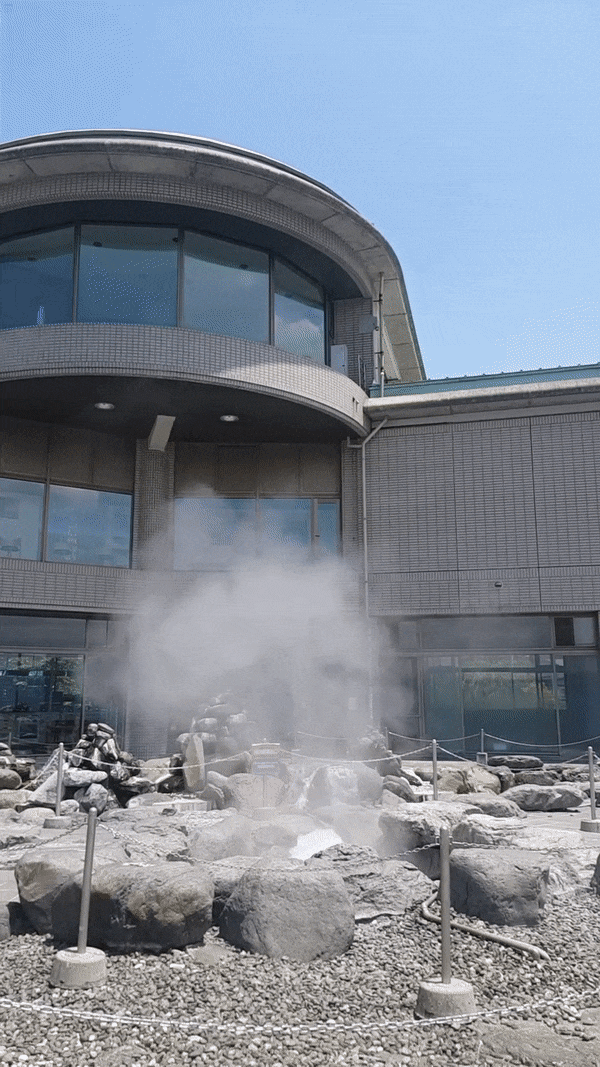
The footbath next to the geyser is also highly recommended, especially if you’ve been walking or traveling for a while. Treat yourself to an ice cream from the Geyser Center before you do so, and enjoy a relaxing view of Lake Suwa.
Lake Suwa Sightseeing Boat Cruise
Want to enjoy Lake Suwa a little more? Get on one of the sightseeing boats for a cruise! You may have spotted them already on your way to the Geyser Center, but there’s a Swan and Turtle boat that go around Lake Suwa at specific times.


There is one snack sold at the small shop that we strongly suggest you try. It’s called “Suika Dango” or Watermelon Rice Dumpling and it’s basically three small rice dumplings coated in chocolate and made to look and taste like a watermelon!
What’s even better is that it is not just the outside that resembles a watermelon. Bite into it and you’ll see that the rice dumpling is colored red and there are small black sesame seeds inside to represent the watermelon seeds! This snack looks great and it tastes great, so be sure to get one before boarding the sightseeing boats.

On the day we went on the cruise, we got to board the Turtle boat which is called Ryugumaru. Ryugumaru is an older boat, as you can see just from looking at it, and has been running from 1976. The boat is going into its last years now with a new boat taking its spot next year, so if you want to take a ride on it, you would have to do so this year.
There were some people on jet skis following our boat. They used the waves that came from our trail to jump up from the water and do some stunts. Once you’re in the boat, you can choose either a seat on the lower or the upper deck. We went to the upper deck, where there’s a few chairs gathered in the middle.
The weather was amazing, we had very clear skies. We were so lucky even that we got to see Mount Fuji from the lake! It’s not something you can see too often as clouds can cover it up pretty quickly, but going in the morning definitely helped!

Cruise times: 09:30, 10:00, 10:30, 11:30, 12:30, 13:30, 14:30, 15:30 and 16:00*
(*16:00 only runs on weekends and holidays)
Boarding Fee: Adult 900 JPY (From October 2019: 920 JPY), Child 450 JPY (From October 2019: 460 JPY)
TIP! You can get a discount if you stay at the nearby ryokan Suhaku. More information on Suhaku at the end of the blog.
Recommended Lunch: Unagi
Like other areas in Nagano Prefecture, the Suwa area is known for its soba (buckwheat) noodles so there are a lot of soba restaurants scattered around the lake. If you’re looking for something other than soba, we also recommend unagi or Japanese freshwater eel.
In the past, there used to be a healthy population of freshwater eel in Lake Suwa. Although this isn’t the case anymore, the way the eels and the sauce are prepared is something that has been passed down through generations, which makes the eel in this area so delicious. The fluffy eel and the sweet sauce it’s coated in complement each other and makes you want to eat more and more of it.
“Suwa Gokura”, the Five Breweries of Suwa
After you’ve filled your belly with some delicious food, it’s time for some tasty drinks as well. Make your way back to Kamisuwa Station and go a little beyond that to find the five sake breweries of Suwa, or “Suwa Gokura” as they are collectively called in Japanese.
These five breweries are Maihime, Reijin, Honkin, Yokobue and Masumi. They are located very near to each other (it’s only about a 5-minute walk between the first and the last brewery) as well as to the station, so you don’t have to worry about transportation.
While it’s not possible to get an inside tour at any of the breweries, they do provide opportunities to taste a couple of Japanese sake types. Most of the staff at the breweries speak Japanese only, but they will use pamphlets among others to try their best to explain the different flavors to you.
Each one of the breweries has a different look and feel. While the inside of Reijin is bigger, it does not have that same personal touch that Maihime has. The tasting system here is self-service; there is a small fridge near the counter where you can choose which sake you’d like to try.
Excluding Masumi, each of the breweries will let you have a few small cups of sake to try for free, but if you want to take full advantage of these five amazing breweries, we highly recommend getting the Suwa Five Tasting Set (1,800 JPY. From October 2019: 2,000 JPY). This set includes a special sake glass, a small carry bag and a stamp card.
Visiting each brewery will earn you a stamp and once you complete the stamp card, you can put this in a postbox for a chance at a special prize. You can take as long as you want to complete the card as it never expires, so if you’re short on time, you can come back a year later to collect the rest of the stamps.

With the Tasting Set you get to try at least five different sakes at each of the breweries. Even though the glass is smaller than, say, a wine glass, Japanese sake can pack quite a punch, so you will most certainly feel something after drinking 25 different sakes. Be sure to drink plenty of water in between. Also, they sell small snacks at most of the breweries so you can buy a bag of caramelized cashew nuts for example, if you feel like snacking on something while you drink.
The staff of the breweries choose the order in which the sake types go, so we started off with a slightly dry one, then changing to a very dry one and slowly going to the sweeter variants. The photo is of the tasting at brewery Maihime.
You’ll get to try a couple of sake and then they provide you with water to cleanse your palette and to make sure the alcohol doesn’t hit you too quickly.
There are many different types of sake so if you have a preference or want to try something that they haven’t let you taste yet, don’t hesitate to ask. There are also some sakes that you can only taste if you have purchased the Tasting Set.

After going past Maihime, Reijin, Honkin and Yokobue, we ended our sake adventure at Masumi. Out of the five breweries, Masumi is the most well-known and its sake has won both national and international awards.
They have international staff as well, which makes it easier for foreign tourists to ask questions about any of the sakes. As they are one of the busier breweries, they usually divide their visitors in groups for the tastings.
All the breweries close their doors at 17:00, so if you want to do them all in one day, keep that in mind. If you’re staying in Suwa (which is recommended with all that sake), you can divide your sake tastings over two days which might help you appreciate the different flavors more.
There is also a lot more to see in the Suwa area, for example the famous Suwa Grand Shrine and the wonderful museums around the lake such as the Suwa Glass Village and the Taizi Harada Art Museum. If you want to experience everything, take a few days out of your schedule to discover the area and enjoy yourself to the fullest.
As for accommodation, you might consider the ryokan Suhaku. As we previously mentioned, guests staying here get a discount for the sightseeing boats, but that’s not the only reason to spend the night there. It has two wonderful hot springs which are represented in the hotel’s name – a “red” (Su) tea-colored hot spring and a “white” (Haku) clear-water hot spring.
There’s also a hotel shop where they sell many of the sakes from the five breweries, so if you wanted to do some last-minute souvenir purchases, the shop has you covered.



